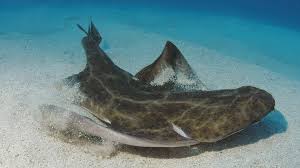The Imperilled Status of the Angel Shark: Conservation Insights

Introduction
The angel shark, a critically endangered species, has recently gained attention for its precarious status in marine ecosystems. Recognised for its flattened body and resemblance to rays, the angel shark is native to shallow waters of the Mediterranean Sea and parts of the Northeast Atlantic. Its plight is particularly relevant today, as ongoing conservation efforts make it vital for communities and environmentalists to understand and protect this unique species.
Current Status of Angel Sharks
Recent assessments indicate that many species of angel sharks have suffered drastic population declines, primarily due to overfishing and habitat loss. The International Union for Conservation of Nature (IUCN) has listed the angel shark as Critically Endangered, with some species facing extinction in the near future if immediate actions are not taken. Research suggests that the angel shark population has decreased by over 90% in certain regions since the 20th century.
Conservation Efforts
In efforts to combat this alarming trend, various conservation initiatives have been set in motion. The European Union has begun enforcing stricter fishing regulations to protect angel sharks and their habitats. Moreover, organisations such as the Angel Shark Project are actively engaged in raising awareness, conducting research, and supporting policy changes aimed at preserving their populations. One of the key focuses is to identify critical habitats and promote marine protected areas (MPAs) where these sharks can thrive without the threat of fishing activities.
Community Engagement
Local communities play a crucial role in the conservation of angel sharks. Educational campaigns are underway to inform fishermen about the species, aiming to reduce accidental capture through more sustainable fishing practices. Collaborative projects between fishermen and ecologists are also exploring alternative livelihoods that do not harm the local shark population.
Conclusion
The future of the angel shark hinges on successful conservation efforts, international cooperation, and community involvement. As awareness grows and policies adapt, there is hope that this unique species can recover from the brink of extinction. For readers, understanding the importance of preserving angel sharks is essential. Their existence signifies the health of marine ecosystems; protecting them is instrumental in safeguarding our oceans for future generations.








